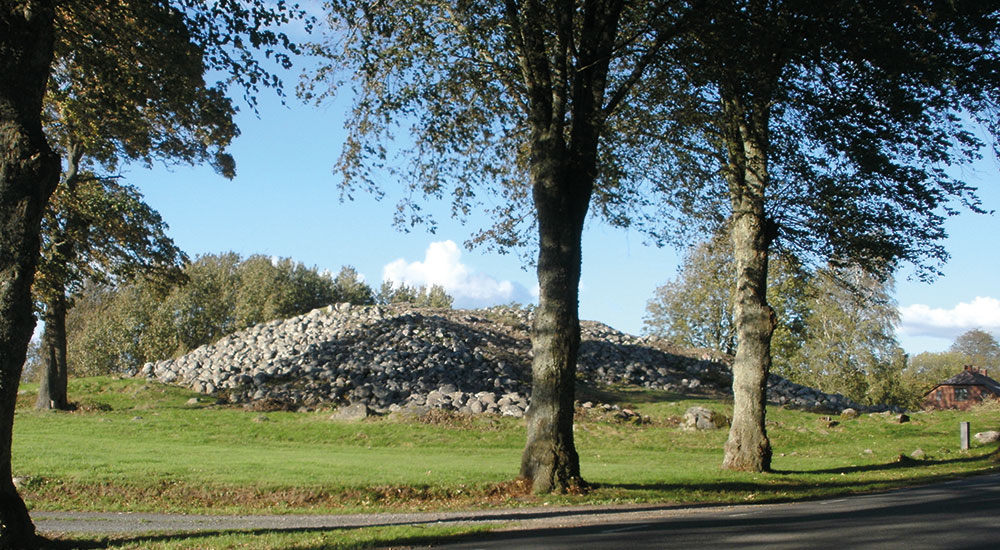
We can only speculate, but we know that the barrow in Tun was originally a full 60 metres in diameter and 7 metres high. It is one of the largest barrows in Sweden, but has never been excavated. At Stenkullen you can also see the remains of a prehistoric settlement, a sacrificial spring and the medieval village site of Tun. A heritage trail with information boards begins at Tun church. To the south of the barrow there is a burial site dating from the early Iron Age (500‑1050 CE) that contains several mounds and stone settings. A few metres to the north of the barrow is a spring known as “Kuskällan” or “Korskällan” – a sacrificial spring into which offerings of coins or items of value could be thrown to cure illness, it was believed. A little further to the north-west of the barrow are the remains of the original village of Tun, which was located here from the early Iron Age until 1806, when the village was moved.


